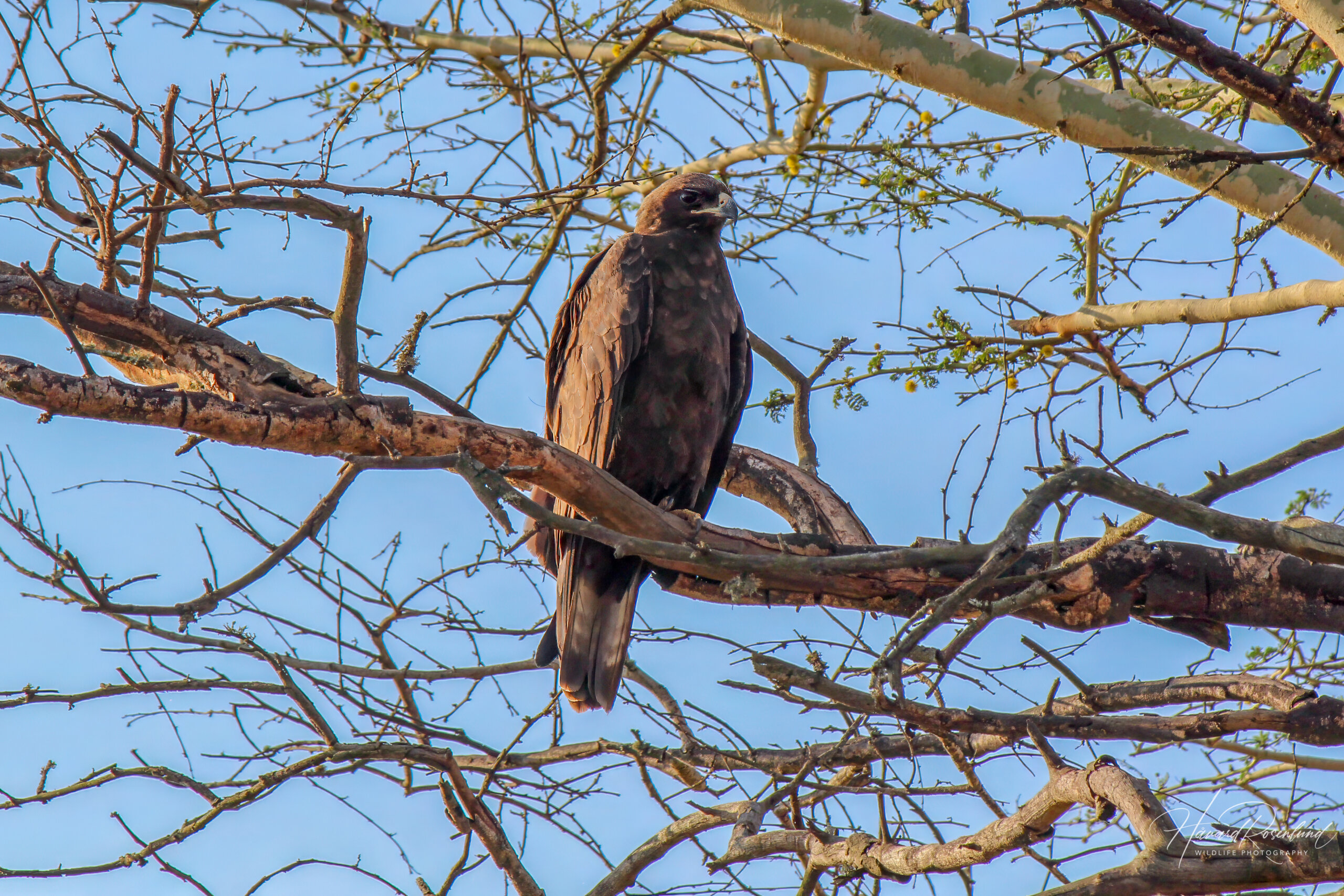Description
The tawny eagle (Aquila rapax) is a large bird of prey belonging to the true eagles. It is found across a wide range in Africa and Asia, from Morocco in the west to India in the east (but not the Middle East), as well as most of sub-Saharan Africa. This eagle exhibits a variation in color from a tawny color to darker brown, often with a lighter underside. Adults typically have a body length of 60-75 cm (23.6-29.5 in), a wingspan of 159-183 cm (62.5-72 in), and weigh between 1.6 and 3.1 kg (56.4-109 oz). Notable features include a heavy bill, broad wings and a short tail.
Similar species
The tawny eagle is often confused with other similar eagle species such as the somewhat larger steppe eagle (Aquila nipalensis) – in both Africa and Asia – and the smaller Wahlberg’s eagle (Hieraaetus wahlbergi) in Africa. Steppe eagles are generally darker in color, but a distinguishing factor is the long gape at the base of the beak, stretching almost to the back of the eye, whereas the other brown eagles, such as the tawny eagle, rarely have a gape stretching further than the center of the eye. The Wahlberg’s eagle is more slenderly built, and has a more slender bill as well. One other clear difference is the shape of the nostrils. Wahlberg’s eagles display round nostrils, whereas tawny eagles have vertical slit-like nostrils that are longer and narrower.
The various species of spotted eagle (in the genus Clanga), can also be confused with tawny eagles at the times, but they are all smaller (except the greater spotted eagle (Clanga clanga), which is almost similar in size to tawny eagles), have more slender bills with round nostrils, are often darker in coloration, and they show clearly darker to almost black edges towards the end of the wings. The feathered “boots” of the spotted eagles also gets narrow towards their feet, which is typical for this genus.
Diet & habitat
The tawny eagle is versatile in its habitat preferences, commonly found in savannas, grasslands, and semi-deserts. They avoid dense forests and true deserts. Their diet mainly consists of small mammals, birds, and carrion. They are opportunistic feeders, often seen near bushfires or following larger predators to scavenge leftovers. Temporary associations with other raptors, such as vultures, are sometimes formed for more effective scavenging. They hunt from a perch or while soaring. Tawny eagles have a remarkable sight and can spot prey from great distances.
Nesting
Breeding season varies depending on the geographic region. These eagles are monogamous and known for their elaborate aerial displays during courtship. They build large nests in trees or on cliff edges. The female typically lays 1-3 eggs, with an incubation period of about 42-45 days. Chicks fledge approximately 70-85 days after hatching.
Status & Threats
The population of tawny eagle is decreasing across its range. Major threats include habitat loss, poisoning of carcasses, and disturbance at nesting sites. Secondary threats include collisions with power lines and wind turbines. It is also affected by climate change, as longer droughts means less prey. It is listed as vulnerable on the IUCN Red List.






